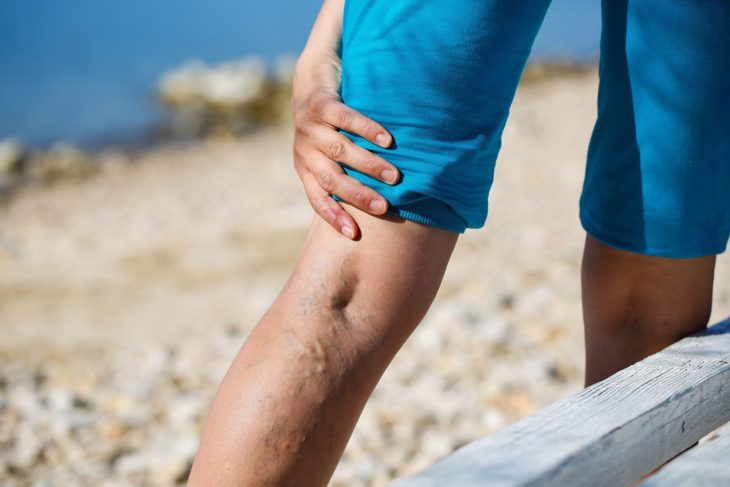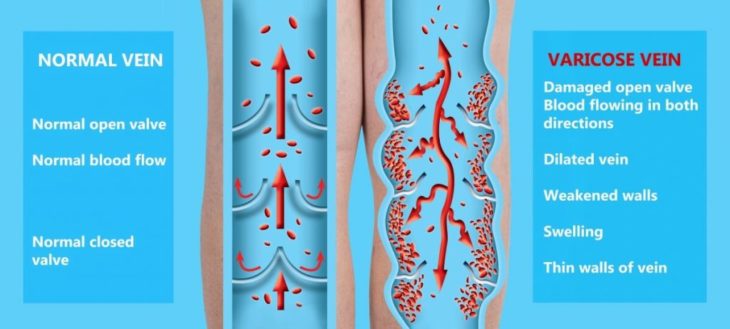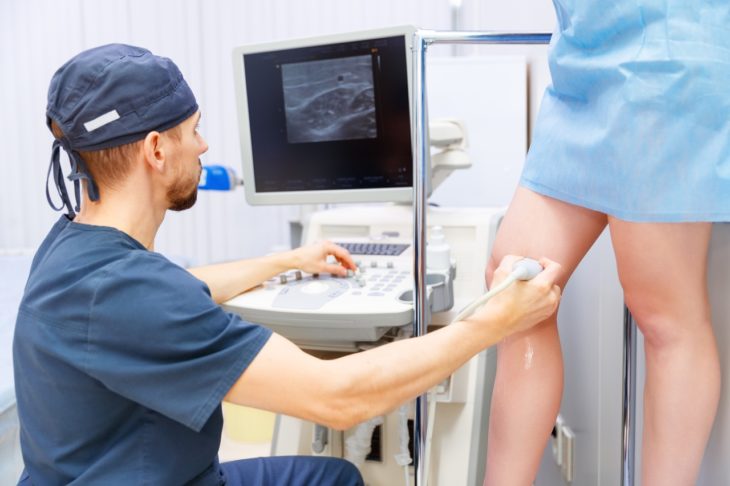Vascular disease is often misunderstood by the general public, as it encompasses several different types of conditions that impact the human body. Diseases of the veins, lymphatics, and arteries are included in vascular conditions that are all in some form connected to the flow of blood. Throughout the UK alone, 40 percent of deaths are attributed to vascular diseases, but many are preventable with the right care plan.
One of the more common vascular diseases involves varicose veins, and blood ultimately pools within the area of the leg. As National Vascular Disease Awareness Month takes place this September, it is helpful to know what can be done to recognize the signs, what causes the disease, and options for treatment.

Source: Lokalkompass
Causes of Varicose Veins
According to RadianceVeinClinic specialist, this common disorder presents as twisting and bulging just beneath the skin’s surface. This takes place when the valves in the venous system of the leg fail over time, causing blood to pool at the site where no longer allows for circulation. They impact men and women equally, and nearly 30 percent of the population is affected by the discomfort and unsightly look of failed in the legs.
The cause connects back to the system in the body. For many, blood flows in the correct direction throughout the veins without issue. However, some adults experience a valve failure that causes the blood to flow in the wrong direction. There is no singular reason an individual develops varicose veins, but many correlate the vascular issue to genetic makeup. Other circumstances, such as being overweight or working in a job that requires standing for prolonged periods, can lead to the development of men and women alike.

Source: Enhance at Aspen
Options for Treatment
Although varicose veins are relatively common among adults, and the cause behind broken valves in the system is widely a genetic issue, the good news is that there are plenty of options for treatment. Many specialists first recommend at-home remedies to ease the pain, swelling, itching, and overall discomfort that come with. Self-care, including getting enough exercise and being active, taking breaks to move the legs and body throughout the day, and eating a healthy diet all help toward keeping weight down to minimize the potential for issues. Additionally, compression therapy with the help of compression socks or stockings can be beneficial for varicose patients.
When these recommendations are not enough to ease varicose symptoms, specialists may pursue other courses of action. Several minimally-invasive procedures exist, each designed to help close up broken veins so that the blood begins to flow to healthy. Sclerotherapy uses an injection to target varicose veins, while laser therapy utilizes high-intensity light to treat. Either procedure can work to treat in a short period of time, without much recovery required, and with minimal discomfort. However, selecting the right care plan involves a discussion of realistic outcomes with a specialist.

Source: Styl
Taking Part in Vascular Disease Awareness Month
Throughout the month of September, organizations around the UK are coming together with specialists and other medical professionals to raise awareness for vascular diseases. Because of the preventable nature of many conditions related to blood flow in the body, spreading the word about what steps individuals can take to reduce their chances of developing a life-changing disease is a necessary cause. Participating in National Vascular Disease Awareness Month can be as simple as getting involved in a fundraiser or local community event, or using the time to educate yourself on the prevention steps available.
Individuals who are concerned about developing the vascular disease, including varicose veins, can and should focus on lifestyle changes first. Giving up smoking provides many different health benefits, as does regular exercise and eating a healthy, balanced diet. These may seem like small strategies to help prevent vascular disease, but they can work wonders on creating a healthier body that is less likely to develop severe medical conditions over time.
